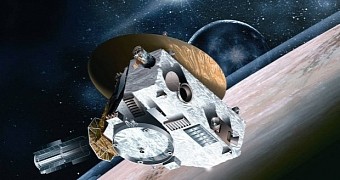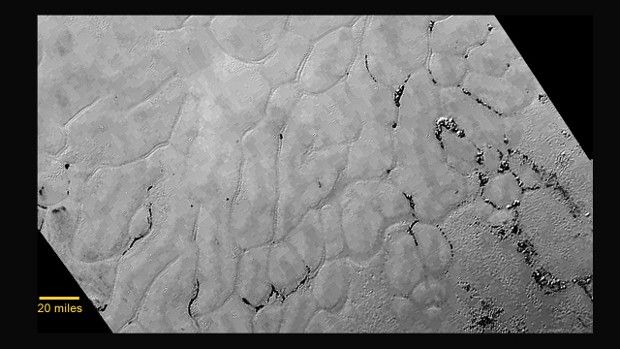Earlier this week, on July 14, NASA's New Horizons spacecraft flew by dwarf planet Pluto at the farther end of our Solar System and came within 7,750 miles (12,470 kilometers) of the orb's surface.
During its flyby of Pluto, the US space agency's probe collected data on the makeup of the dwarf planet's atmosphere and also imaged its surface.
The terrain that came into view in exquisite detail, nicknamed Tombaugh Regio after Pluto discoverer Clyde Tombaugh, is somewhat brighter than other parts of the orb's surface and shaped like a heart.
In the center-left of this region, New Horizons saw vast icy plains criss-crossed by troughs. A view of this landscape, available below, was made public by NASA just yesterday.
Named Sputnik Planum after Earth's first artificial satellite, the region formed around 100 million years ago. Unlike other of its terrains, Pluto's Sputnik Planum does not sport any craters. Astronomers describe it as similar to cracked frozen mud here on Earth.
So, how did these plains form?
It is believed that the icy plains were shaped by geologic processes. What's more, it might be that the uncanny terrain is still transforming in this day and age as a result of shifting environmental conditions.
“The irregular shapes may be the result of the contraction of surface materials, similar to what happens when mud dries,” mission scientists at NASA explain in a statement.
“Alternatively, they may be a product of convection, similar to wax rising in a lava lamp. On Pluto, convection would occur within a surface layer of frozen carbon monoxide, methane and nitrogen, driven by the scant warmth of Pluto’s interior,” they add.
As for the dark streaks that are also visible aligned neatly in nearly the same direction across the plains, researchers believe that they are the work of winds blowing across the frozen landscape.
This view Pluto's icy plains was obtained by the New Horizons probe from a distance of 48,000 miles (77,000 kilometers). Sharper images should be released in the days to come, so stay tuned for updates.

 14 DAY TRIAL //
14 DAY TRIAL // 

